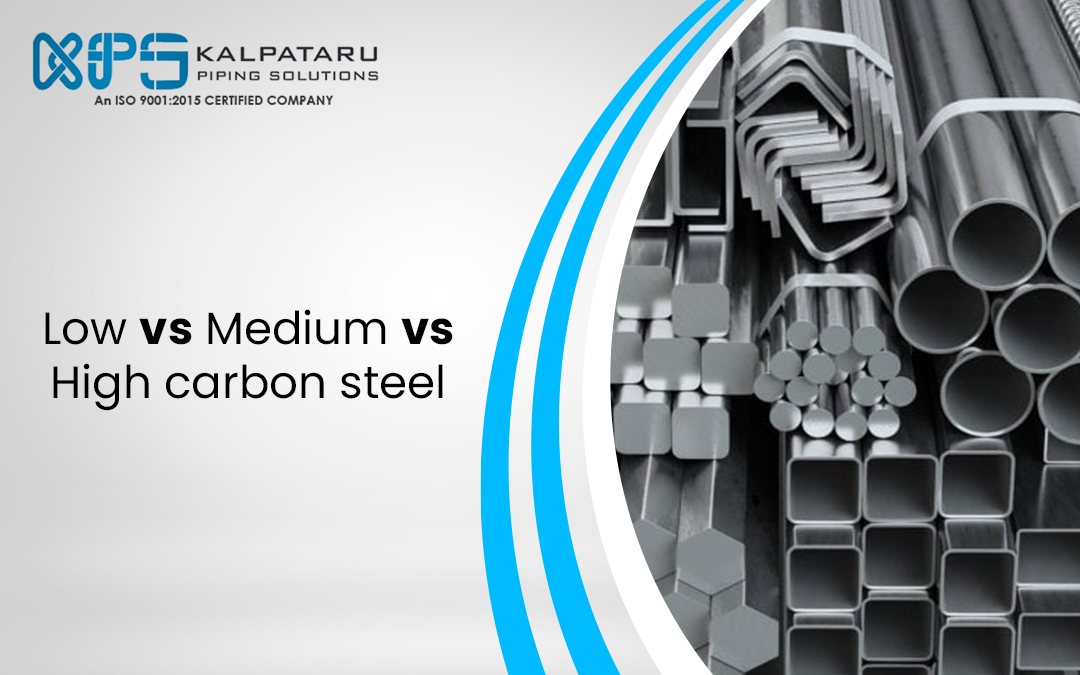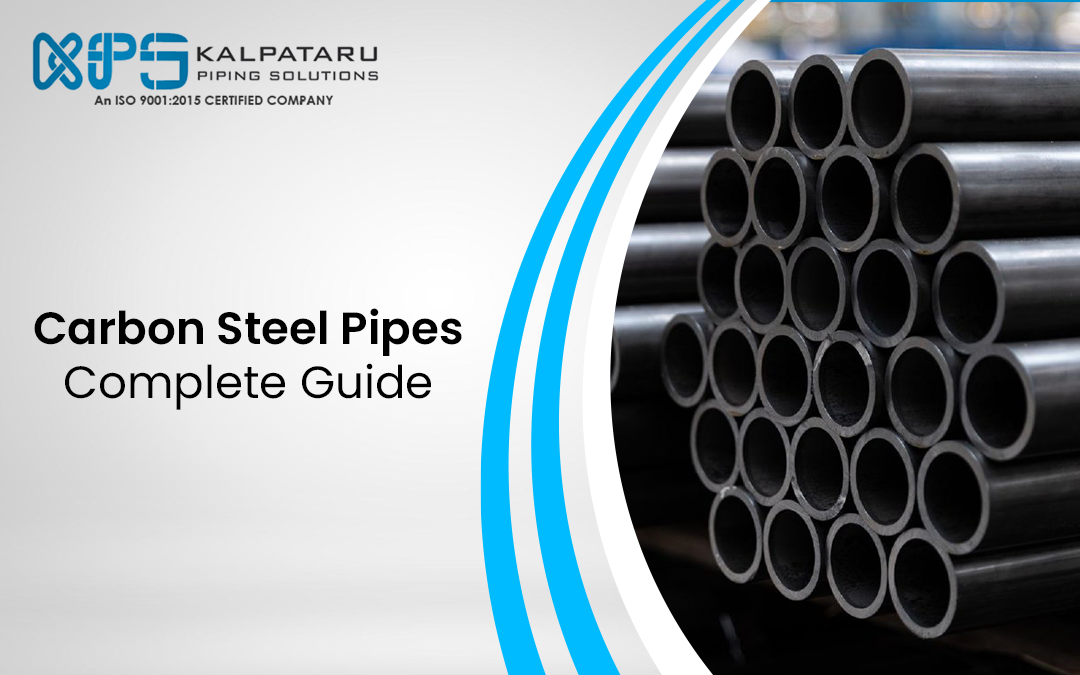Steel comes in various forms, and in this guide, we’re focusing on low, medium, and high-carbon steel. The amount of carbon in the steel influences its characteristics. Low-carbon steel is softer and easier to weld, making it suitable for many projects. Medium-carbon steel offers a good blend of strength and flexibility, often used in machinery and vehicle parts. High-carbon steel, with its high hardness, is perfect for cutting tools and heavy-duty applications.
Keep reading as we look at the main features of each type and how they are used in different industries.
What is Low Carbon Steel?
Low-carbon steel has a small amount of carbon mixed with iron, usually less than 0.30%. It’s also called mild steel and is cheaper than medium or high-carbon steel. Because it is softer and more flexible, it works well for some uses but might not be as good for others where more strength is needed. Low-carbon steel usually contains between 0.05% and 0.32% carbon by weight. This gives it moderate strength and makes it more flexible and easier to shape compared to high-carbon steel.
Low-carbon steel with very low carbon content is not very hard and is difficult to machine, but its machinability can be improved with quenching treatment. It is typically made into products like angle steel, channel steel, I-beams, steel pipes, and steel plates, which are used for building structures, containers, boxes, furnace parts, and farm equipment.
Properties of Low Carbon Steel
Although the melting point of low-carbon steel is generally stable, each grade has slightly different properties. Still, we can provide a range of values to give a basic idea of the overall characteristics of this material.
| Property | Value |
| Density | 0.103 – 0.292 lb/in³ |
| Tensile Strength, Yield | 20300 – 347000 psi |
| Fracture Toughness | 30.0 – 105 ksi-in½ |
| Shear Modulus | 10200 – 11600 ksi |
| Melting Point | 2600°F |
| Thermal Conductivity | 176 – 645 BTU-in/hr-ft²-°F |
Grades of Low Carbon Steel
In the U.S., there are three main standards for carbon steels:
- ASTM International: Develops global technical standards.
- AISI: Promotes new steel technologies.
- SAE: Focuses on automotive engineering standards.
ASTM is the most common. For example, ASTM A307 specifies carbon steel bolts and rods with a tensile strength of 60,000 psi, which includes:
- Grade A: For general use with low strength requirements.
- Grade B: For applications needing higher strength, like piping joints.
Standards ensure materials perform well, while grades define their specific properties. The chart below lists common grades of low-carbon steel:
| Standard | Grade | Application |
| SAE J403 | 1006 | Wire products and fasteners |
| SAE J403 | 1008 | Sheet metal work, automotive components, and wire products |
| SAE J403 | 1010 | Cold heading, automotive components, and sheet metal work |
| ASTM A36/A36M | A36 | Structural steel grade used in buildings, bridges, construction equipment |
| ASTM A53/A53M | B | Structural and pressure applications, such as water and gas transmission |
| ASTM A516/A516M | 70 | Boilers and pressure vessels |
| ASTM A1011/A1011M | 33 | Sheet metal work, automotive components, and construction materials |
| ASTM A513/A513M | 1010 | Automotive parts, machinery components |
Uses of Low Carbon Steel
Low-carbon steel is useful in structural applications, even though it’s not as strong as other steel types. It’s also used in machinery parts, helping to lower machining costs. Its ability to be easily shaped allows for quicker production and lower machining expenses compared to materials like aluminum.
What is Medium-Carbon Steel?
Medium-carbon steel usually contains about 0.3 to 0.6% carbon. It includes many types of high-quality carbon structural steel as well as some regular carbon structural steel. This steel is mainly used to make various mechanical parts, with some applications in engineering structures.
Medium-carbon steel has good thermal processing and cutting abilities, but its welding performance is not as strong, so preheating is required before welding. It is stronger and harder than low-carbon steel but has lower plasticity and toughness compared to mild steel. Cold-rolled or cold-drawn medium-carbon steel can be used without heat treatment, although it can also be heat-treated. When quenching and tempering are applied, it shows excellent overall mechanical properties.
Properties of Medium Carbon Stee
Each grade of medium-carbon steel has unique properties that differentiate it from other grades in this category. The table below summarizes a range of values for various properties related to medium-carbon steel.
| Property | Value |
| Property Yield Strength |
Value 420 Mpa |
| Property Hardness |
Value 200 MPa |
| Property Density |
Value 7.75–7.89 g/cm³ |
| Property Magnetism |
Value It is typically magnetic |
Medium Carbon Steel Grades
Medium-carbon steel products adhere to specific standards, which classify them into various grades. Below are examples of commonly used grades of medium-carbon steel along with their corresponding standards:
| Chemical Element | Percentage composition |
| Chemical Element Carbon (C) |
Percentage composition 0.3%–0.6% |
| Chemical Element Manganese (Mn) |
Percentage composition 0.6%–1.65% |
| Chemical Element Sulfur (S) |
Percentage composition 0.05 |
| Chemical Element Phosphorus (P) |
Percentage composition 0.04 |
| Chemical Element Chromium (Cr) |
Percentage composition 0.80–1.10 |
| Chemical Element Copper (Cu) |
Percentage composition 0.08 |
| Chemical Element Vanadium (V) |
Percentage composition 0.51 |
| Chemical Element Nickel (Ni) |
Percentage composition 0.15 |
| Chemical Element Molybdenum (Mo) |
Percentage composition 1.61 |
| Chemical Element Iron |
Percentage composition Balance |
Uses of Medium Carbon Steel
Medium-carbon steel is often used to make high-strength moving parts, such as pump pistons, steam turbine impellers, heavy machinery shafts, worms, air compressors, and gears. It’s also used for surface wear parts, crankshafts, machine tool spindles, rollers, bench tools, and other similar items.
What is High Carbon Steel?
High-carbon steel has a carbon content that ranges from 0.60% to 1.5%. This high level of carbon gives it exceptional hardness, tensile strength, and wear resistance, making it suitable for applications that need strong and durable materials.
While high-carbon steel is known for its wear resistance, it also has higher brittleness and lower ductility, which can make it prone to cracking in certain situations. Welding high-carbon steel can be challenging because of the risk of brittleness and cracking in the heat-affected area, requiring special techniques to avoid these issues.
Properties of High Carbon Steel
Because there are different standards and grades, there isn’t one specific value that defines the properties of high-carbon steel. However, the following gives a general range of what to expect regarding its properties.
| Property | Value |
| Density | 0.0163 – 0.298 lb/in³ |
| Tensile Strength, Yield | 39900 – 484000 psi |
| Fracture Toughness | 12.0 – 150 ksi-in½ |
| Shear Modulus | 11300 – 12000 ksi |
| Melting Point | 2,800-2,900°F |
| Thermal Conductivity | 1132 – 361 BTU-in/hr-ft²-°F |
Grades of High Carbon Steel
High-carbon steel grades are classified according to specific standards. Below are some commonly used grades of high-carbon steel:
| Standard | Grade | Application |
| ASTM A29/A29M | AISI/SAE 1060 | Springs, gears, axles, heavy-duty machinery components |
| ASTM A29/A29M | AISI/SAE 1065 | Springs, cutting tools, industrial knives, and blades |
| ASTM A29/A29M | AISI/SAE 1070 | Springs, automotive suspension components, agricultural machinery parts |
| ASTM A29/A29M | AISI/SAE 1080 | Heavy-duty springs, automotive components, heavy machinery parts |
| ASTM A295 | AISI/SAE 52100 | Bearing steel used in the manufacture of ball and roller bearings |
| ASTM A600 | AISI/SAE M2 | High-speed tool steel used for cutting tools, drills and taps |
| ASTM A686 | AISI/SAE W2 | Water-hardening tool steel used for cutting tools, dies, punches, and woodworking tools |
Uses of High Carbon Steel
High-carbon steel is primarily used in applications that require excellent durability and wear resistance. This includes making knife and saw blades, where toughness is less critical since these items don’t face heavy impacts that could cause breakage. In contrast, structural components like I-beams, which are made from medium or low-carbon steel, need different properties to handle the loads and impacts they encounter.
For More Details Check Out Our Blog on – Property of High Carbon Steel
The differences between Low, Medium, and High Carbon Steel
| Low-carbon steel | Medium-carbon steel | High-carbon steel | |
| Carbon Content | 0.05% to 0.32% | 0.30% to 0.60% | 0.60% to 1.5% |
| Characteristics | Ductile Malleable Tough Easily joined and welded Poor corrosion resistance |
Stronger Harder Less ductile Less malleability Good corrosion resistance |
Very strong Very hard Poor ductility Poor malleability Better corrosion resistance |
Contact us today to discuss your Carbon Steel needs. Get a custom quote now!
FAQ
What is the difference between low, medium, and high carbon steel?
Carbon steel is classified into three categories based on carbon content. Low-carbon steel contains less than 0.25% carbon, medium-carbon steel has a carbon content ranging from 0.25% to 0.6%, and high-carbon steel contains more than 0.6% carbon. Each type offers distinct properties and applications.
What are the three types of carbon steel?
Carbon steel is generally classified into three main types based on the amount of carbon it contains low (or mild) carbon steel, medium carbon steel, and high carbon steel. Each category has distinct properties and applications, determined by its carbon content.
Which is stronger, high or low carbon steel?
High-carbon steel is stronger than low-carbon steel due to its higher carbon content, which enhances its strength and hardness. However, low-carbon steel is softer and easier to machine and weld. While high carbon steel offers greater strength, it is also more challenging to work with.







